Indoor plants toxic to dogs
Indoor plants help in purifying the indoor air quality and also give a serene and nice environment. It freshens up the air and soothes eyes as well as thoughts. But if you have pets like dogs with you then it is important to know about the plant and its compatibility with your pets. That is if you have a pet in your house you should check whether the plant you are buying is safe for your pets or not. This article is specifically for those who have Dogs in their house and want to have indoor plants as well. Therefore, this article gives a list of indoor plants toxic to dogs.
1. Asparagus fern (Asparagus sprengeri)

Ferns are generally not toxic to dogs but berries if ingested cause mild toxicity. The parts of asparagus fern contain compound sapogenin especially berries. Sapogenin of berries causes abdominal discomfort if ingested (1).
Symptoms: Abdominal discomfort, pain, vomiting, diarrhea.
Treatment: Severe condition required Vet consultation.
2. Daffodils

These plants can be grown mainly outdoor but sometimes also grow as indoor plants. Another name of this plant is Narcissus belongs to the Amaryllidaceae family. The plant is known for its beautiful flowers. Bulbs, leaves, and flowers contain compound alkaloids which are toxic to dogs.
Symptoms: Diarrhoea, vomiting, abdominal pain, anorexia, lethargy, depression. A high amount even causes death.
Treatment: specific treatment is not available. Consult a vet for symptomatic treatment (2).
3. Sago palm
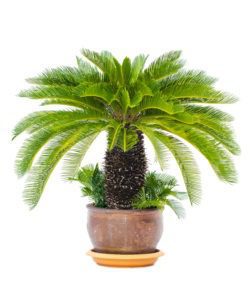
Sago palm or cycad is a beautiful ornamental plant. The plant is beautiful but is also very toxic especially to dogs. The main toxic compound present in Sago is azoxy glycosides. Consumption of this compound may result in gastrointestinal disorder, hepatotoxicity, and carcinogenicity (3).
Symptoms: Diarrhea, liver failure, vomiting, and death in the worst case.
Treatment: immediately consult a Vet.
4. Azalea
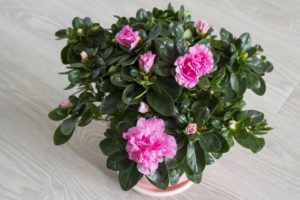
The scientific name of Azalea is Rhododendron simsii. It belongs to the family Ericaceae. It is a beautiful ornamental plant with colorful flowers. But persons who have enthusiastic dogs in their houses should consider its side effects before getting them. The toxic parts are leaves, containing a grayanotoxin.
Symptoms: Leaves cause anorexia, depression, hypersalivation, emesis, colic, tenesmus, tachypnea followed by bradypnea (4). Other symptoms of poisoning include kidney and liver failure.
Treatment: No specific therapy exists. Consult a Vet.
5. Rubber plant
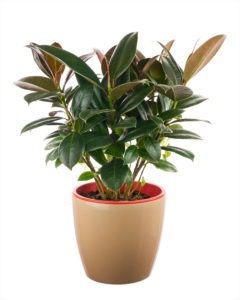
The rubber plant is a beautiful plant with attractive leaves. These plants not only add beauty to the indoor but also helps in purifying the air quality. The main toxic compound is the latex present in the leaves and stems. Although eating the leaves causes mild toxicity for the pets but still, precaution is needed.
Symptoms: Digestive disorder, diarrhea, skin lesions, renal disorders.
Treatment: Should consult a vet.
6. Dumb cane (Diefenbachia spp.)

It belongs to the family Araceae. Although the plant is beautiful its leaves and trunks are toxic to dogs. Leaves contain calcium oxalate crystals. Ingestion causes mechanical injuries to mast cells, favoring the release of histamine.
Symptoms: Irritation in mucus, salivation, paralysis of the tongue, and dysphagia. The digestive disorder, skin, kidney, and respiratory apparatus, with the death of the animal following the ingestion of large amounts of the plant (4).
Treatment: Administration of antihistamine and washing the mouth with sodium bicarbonate solution or water. Removing the residues of the plant from the stomach of the animal by administering emetic drugs represents a good practice if the ingestion has happened within the last two hours (2).
7. Elephant’s ear (Colocasia esculenta)
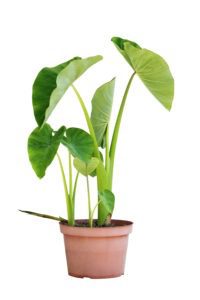
These plants are known for their large elephant-shaped leaves which is the main attractive feature. Ingestion of the leaves by dogs and other animals causes discomfort because of the toxic chemicals present in the leaves.
Symptoms: Oral pain, vomiting, difficulty in breathing, abdominal discomfort.
Treatment: Consult a vet for proper therapy.
8. Ivy
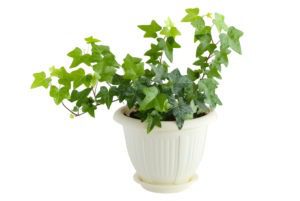
There are around 15-12 species which come under Ivy. It is commonly known as Hedera of Araliaceae family. All the plants come under are a climber in nature. The leaves of ivy contain triterpenoid saponin which is toxic to animals.
Symptoms: Dogs show dermatitis with diarrhea, vomiting, and abdominal pain.
Treatment: Consult a Vet.
